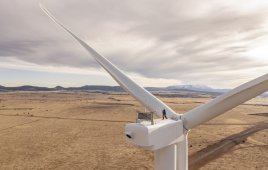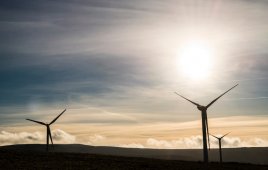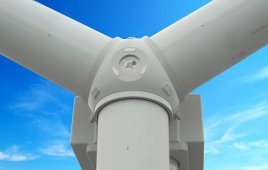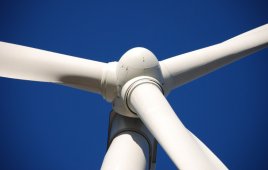General purpose finite-element analysis has proven itself very successful at finding stresses in structures if you assume a steady load. But wind turbines present a range of engineering challenges that arise from large displacements, non-linear material properties, and time varying loads from air flows, conditions which challenge general purpose structural analysis. For these applications it is often better to investigate a multiphysics approach using Computational Fluid Dynamics combined with structural and multibody dynamics solvers to arrive at a solution. The general trend for the industry is to model every possible element in a wind farm development, from the financials to structures to finding the best turbine layout across proposed terrain. Because of this brief space, let’s look at three engineering areas.
CFD software traditionally assisted with aircraft design. But recent trends are toward a wide range of specialized and focused simulation applications that assist with tasks such as composite blade optimization, and dynamic studies of blade and tower assemblies. The wind industry has also encouraged development of software for detailed rotor aerodynamics, wake predictions, and vortex induced vibration from offshore platforms and vortex induced motion.
“Multi-physics simulations are an emerging capability within computational fluid dynamics,” says Altair Engineering’s senior CFD analyst and Program Manager, David Corson. “Historically, CFD software focused on predicting fluid and thermal transport. Recent advances let us include additional physics into the simulation flow field. One area with significant implication for wind-turbine design is Fluid-Structure Interaction. For instance, as turbine blades are designed longer and use new materials, deflection under wind load becomes increasingly important. In high wind, for instance, a blade could deflect enough to hit the tower. But will it? This software can give a good indication. Turbine designers must also consider how a blade’s aerodynamic performance changes with deflection, and then fatigue concerns arising from blade deflections,” says Corson.
Few CFD solvers contain techniques for simulating such behavior in wind turbines. One possible approach to solving this problem utilizes a modal analysis of the wind turbine. Wind loading on blades (the fluid and structure) provides excitation of various vibration modes of the blades, and the resulting deformation is the sum of each modal contribution. All fluid and structural computations are performed by the CFD solver, so there is no run-time coupling of the solver to external codes. A second technique that works well for larger (nonlinear) bending applications, involves run-time coupling to external structural dynamics codes, yielding a coupled Fluid-Structure Interaction method. “This lets users couple the CFD software to a preferred structural solver,” says Corson. Specialized coupling algorithms handle the interpolation between dissimilar meshes (between structural model and fluid model) and communication requirements. Programs of this sort often allow running structural and CFD codes on different computers using different operating systems.
Offshore wind turbines prompt additional questions because they sit on towers driven deep into the ocean floor. “Strong currents can produce vortex-induced vibration and motion of risers and platforms. This leads to fatigue damage or sea bed erosion,” says Altair Engineering Energy Industry spokesperson, Shing Pan. “Experience with offshore oil platforms lets software such as AcuSolve provide validated solutions in this area to help predict tower stresses from wave motion and vortex action. The software helps optimize designs by taking into account changes in current speed and direction that often vary with depth.”
Simulation software has been developed to analyze a wide range of effects, such as wave motion, multiple structures, riser shapes, and motions including nonlinear response. What’s more, the software can tell of interactions with sea bottom and other complex problems, and transient-turbulent processes including boundary layer phenomena, separation, and free shear of wakes.
Other areas in which CFD provides insight include the aerodynamics of steady, transient, and moving rotors; siting studies that allow examining macro, micro and wake predictions; and just as important are noise predictions from high resolution transient simulations. Simulation software can also assist with the best practices and the design of experiments.
Software for designing the layout of wind farms is also going under frequent upgrades. Commercially available programs allow inputting information such as terrain models, historic wind data, performance graphs of selected turbines, and location identifiers. The software then considers wake effects and wind probabilities to calculate annual power outputs from each turbine and the entire farm. Adjusting locations allows finding a layout with the maximum payout.
WPE
Filed Under: Software, Turbines




